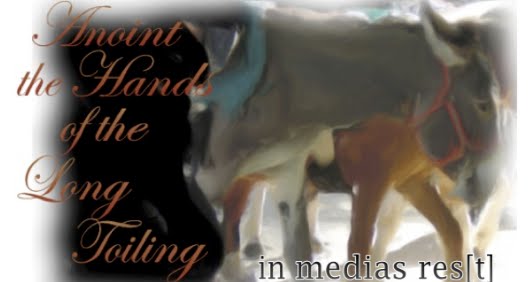I'm interested in producing a road narrative piece that doesn't involve a standard narrative arc. Thinking in terms of the Enormous Room, in which the narrative is held static for the term of his incarceration in such a way that he can explore the various figures within the room and the room itself.
My goal is to provide the same sense of static description in the forward motion of the hunting party. The guiding notion is that they are between worlds and somehow out of time. I imagine this in terms of tarrying with the timeless. Held in the suspension of potentiality. I need to work to evoke this feeling throughout.
On the day to day I'm not sure how to create this impression tho. Presumably I'll focus on Peter and his various actions. Maybe it means focusing on the quotidian. Perhaps he meets up with the troop and just sort of falls in with them. His account can be of his daily activity as it sort of instantly occurs once he joins up. Perhaps he gets really basic tasks and chores, life begins and runs quite simply. Once he describes his daily life, we can begin to describe the others in the troop. These portraits will be the focus with a sort of hazy set of occurrences and travels. "It happened that day that we were passing a small farming village..."
Presumably at this point the arm issues are less the point.
The troop needs some sort of, even if hazy, basic activity. Maybe each figure's task is different? The clown and the fool put on shows. Map is a storyteller. Arthur hunts. The rest peddle wears.
Of all things I need to avoid making someone describe who they are. He doesn't have to ask.
I find the literal wordy of this story very hard to produce. I'm not sure if that is because I don't know the actors in it well enough. Or I don't know the world itself well enough.
I want it to be a mystical space, but a mystical everyday space. I like this notion of him exploring it as space despite the fact that it is actually more about time and space is transient. But I'm not sure yet how to evoke this feeling in his day to day activity. My worry here is that I might need to write this in first person...or I guess I should be doing something more precisely modernist with it, having it move into his telling and out again fluidly.
What method for this might work?
I feel most at ease with the story as a series of sketches told from his perspective. Maybe I need to get this into an embedded series of potential writings.
1) The journal/sketches of Peter O. - Either written or proposed - probably the latter
2) Interrupted continually by things he couldn't know
3) Interrupted by people peering over his narrative shoulder. How can I demonstrate this? As if people are seeing (non-narratively) the things that he isn't writing down. As if there is no "real" situation in which any of this takes place, but some other form of timeless in-between world. Maybe in physical form of the book I'm writing. Embedded dialogue break ins by the fool and the clown? By himself.
